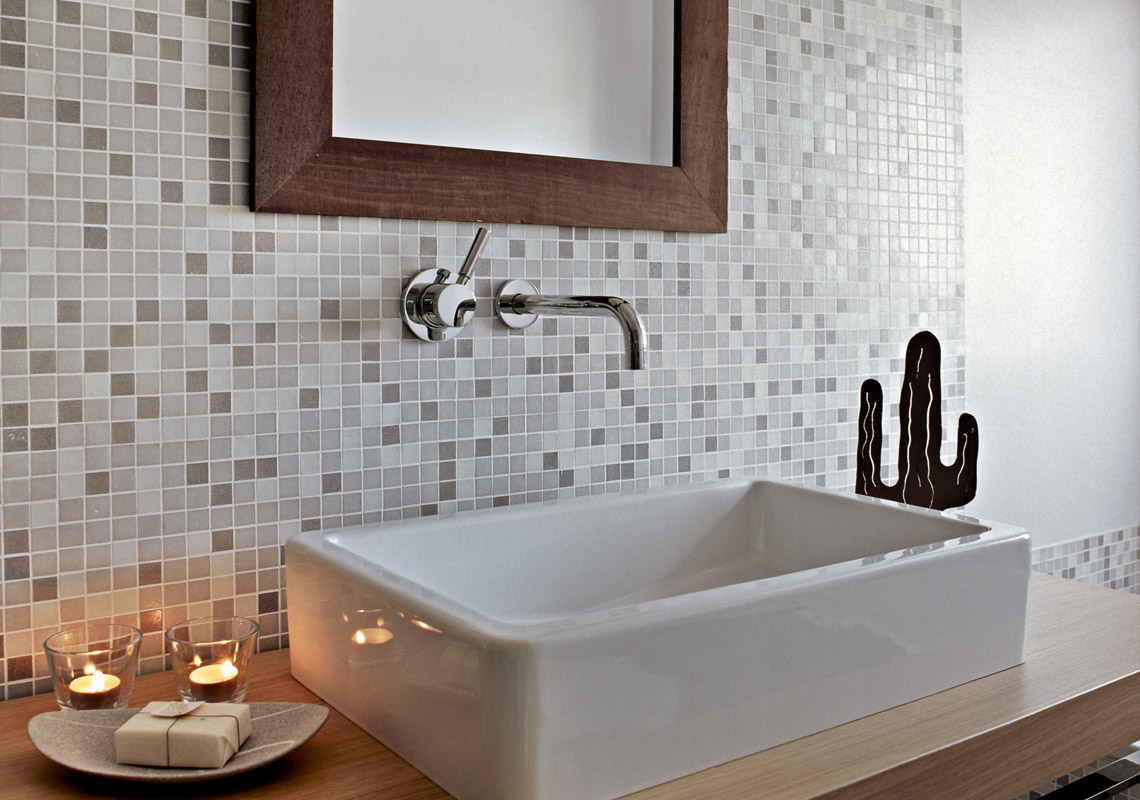Bathroom mosaic - all you need to know
November 2020, author: Kolobius Ewelina, customer advisor
 We love extremes, that is why on the one hand we like large wall tiles, and on the other hand, we are caught by these tiny, bathroom mosaic. This form of wall decoration has been known for thousands of years. How does it fit in with current trends and how do mosaics work in practice?
We love extremes, that is why on the one hand we like large wall tiles, and on the other hand, we are caught by these tiny, bathroom mosaic. This form of wall decoration has been known for thousands of years. How does it fit in with current trends and how do mosaics work in practice?
MOSAIC TRENDS
Mosaics are most often accessories to larger collections of tiles, and to avoid stylistic chaos, it is best to match them with the rest of the collection. They are most often made of ceramic materials and, in simple terms, resemble tile thumbnails, but there are also more sophisticated ones available - glass (matt, mirror, transparent, made of white or colored glass, or with the addition of shiny particles), stone (from ordinary pebbles, through marble, to semi-precious stones), or made of natural pearl mass. You can also find
wooden mosaics (bamboo or exotic wood), metal or plastic. Mosaics can also take very different shapes, from square or rectangular, through hexagonal, round, to very irregular.
MOSAICS AND PRACTICAL ISSUES
Bathroom mosaic work the same way as classical tiles, they have the same parameters, such as strength or absorbency. Gres tiles and glass tiles can be successfully used outdoors (provided they are frost resistant), ceramic tiles - mainly indoors. If the mosaic is to be placed on the floor, it is worth to choose one whose elements are not convex to avoid slipping. Mosaics made of glass are easily scratched, so it is worth choosing for them places that will not be exposed to too much exploitation. Matt, light-absorbing patterns will optically diminish the bathroom, while the glossy mosaic will make it bigger. They can be placed on walls, floors, under the shower, on fragments of shower trays, tops, mirror frames, or used only as decorations.
INSTALLATION OF THE MOSAIC - NOT SO DIFFICULT
Mosaics are sold on nets or on special paper, their installation resembles laying glaze. However, they require a very careful preparation of the substrate, which must be previously leveled and cleaned, and then covered with a primer emulsion (it evens out the absorbency, improves the adhesion and strength of the mosaic). Highly elastic adhesive mortar (properly selected for the type of mosaic) should be applied in a very thin layer so that it does not flow out between the elements of the mosaic - it is best to use a comb with a maximum thickness of 3 mm to spread it. The "slices" of the mosaic should be laid and pressed with a trowel so that they stick evenly to the surface. The next step is a grout - elastic or epoxy - it is recommended to spread it not earlier than 24 hours after sticking the mosaic. After setting, the whole thing should be cleaned dry and then thoroughly washed the mosaic from the installation residues.
See all blog posts
 Privacy Preference Center
Privacy Preference Center  We love extremes, that is why on the one hand we like large wall tiles, and on the other hand, we are caught by these tiny, bathroom mosaic. This form of wall decoration has been known for thousands of years. How does it fit in with current trends and how do mosaics work in practice?
We love extremes, that is why on the one hand we like large wall tiles, and on the other hand, we are caught by these tiny, bathroom mosaic. This form of wall decoration has been known for thousands of years. How does it fit in with current trends and how do mosaics work in practice?
